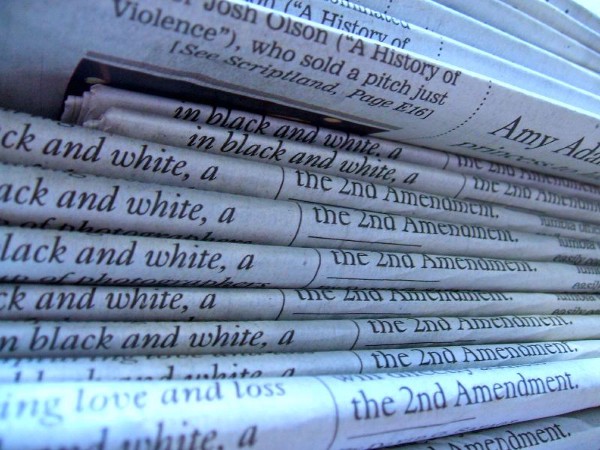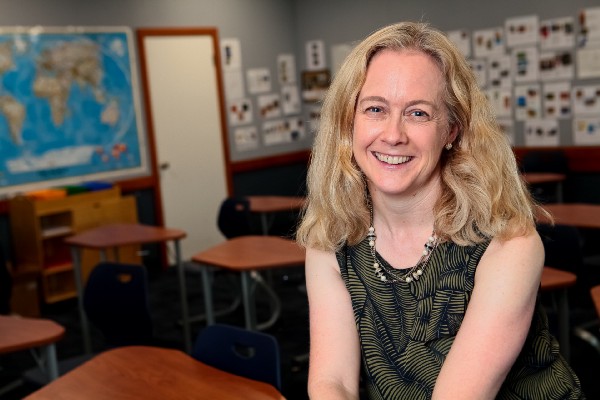By Sarah Cooper, La Canada, California
Immediate interest. Personal relevance. Uncontroversial subject matter. These aren’t always the first phrases teachers and students might think of when discussing current events in class.
But if we head local — choosing around-the-corner or across-town topics that our students may have heard about already — the possibilities for brainstorming real solutions are exciting.
 As a bonus, through local news, we can at least temporarily avoid the yes/no, right/left, red/blue guardrails that can ratchet up the classroom stakes for national and even international news.
As a bonus, through local news, we can at least temporarily avoid the yes/no, right/left, red/blue guardrails that can ratchet up the classroom stakes for national and even international news.
Setting the Tone on Day One
Each day during the school year, my eighth-grade U.S. history students and I discuss current events, sometimes for five minutes and sometimes longer. As such, I like to model the presentation of interesting news choices early on, as early as the first day.
For the past several years, I’ve thought for a long time before selecting a story to discuss on day one, after we whiz through the syllabus and a wonderful “million words or fewer” assignment for their parents.
Two years ago, we dug into a piece on the staying power of See’s Candies stores in a world where so much shopping has migrated to phones and laptops. These California middle schoolers found many personal pathways into the article, including the power of online commerce in their lives, their dwindling experience of local malls and, of course, the candy itself, created by a company founded in L.A. in 1921. Many students learned the term “brick and mortar” through this discussion and then applied it later in the year to other stories about microeconomics.
Last year, we jumped into an article about architect Frank Gehry’s design for a new building in Inglewood, just south of Los Angeles, for the Youth Orchestra of Los Angeles, conducted by Gustavo Dudamel. A number of students had been to Walt Disney Hall downtown, designed by Gehry, which is also where Dudamel conducts the LA Philharmonic. Others had heard about the Rams stadium being built in Inglewood, and they had all learned about gentrification the year before when they took history. The story offered many potential personal connections, and they remembered it well into the year.
Quietly Setting the Stage
This year, as national policies filtered into even the local sections of newspapers, I finally found a piece in Los Angeles Magazine that I thought would be relevant to students’ lives about tech, transportation, and gamification: “Waze Hijacked L.A. in the Name of Convenience. Can Anyone Put the Genie Back in the Bottle?”
First, students discussed in pairs who knew what Waze was (most did) and any “Waze stories” they could tell from their own experiences. After that, we looked at a CBS video from 2018 about the havoc created when the app dropped commuters onto a 30%-plus grade surface street in Echo Park, as well as a follow-up story about safety measures the city ended up taking, including making parts of the street one-way.
The best part came next, though, when I asked students to brainstorm in pairs 1) Whose problem is this — Waze, the drivers, the city of L.A., or all three? and 2) What is a solution?
Many of the suggestions in my three history sections pointed to Waze itself: Warn people on the app of traffic and danger. Require people to be “suggesters” before they can become even lower-level editors. Exercise more safety oversight by hiring people to vet routes. Change the permission level needed to pin a police officer or an accident on the app. Randomize routes so not everyone is going to the same place.
Other ideas led to the City of Los Angeles: Make more pedestrian-friendly “walking streets,” blocked off to all but local traffic. Add more stop signs. Work with tech companies, which L.A. is starting to do already.
This Can Go Far Beyond Day One
By the end of the period, we had thought a lot, in a low-key way, about personal responsibility, federal regulation and local government’s ability or inability to effect change — all from a news story that took place literally in some students’ backyards.
Of course, throughout the year we’ll tackle national decisions and international agreements, and it’s exciting to wade into these larger debates. In a class covering U.S. history and civics, students always want to know the “now” following up on the “then” we study.
But on days when I want to have what feels like a relatively pure discussion, unencumbered by political lenses, I prefer to stay local. And maybe my students, as they grow up, will want to tackle some of these home-grown problems themselves.

Sarah Cooper teaches 8th grade U.S. history, advises 7th and 9th graders, and is Dean of Studies at Flintridge Preparatory School in La Canada, California. She is the author of two books, Creating Citizens (Routledge, 2018) and Making History Mine (Stenhouse, 2009). Sarah speaks at conferences and writes for Education Week, MiddleWeb, CommonLit, and other publications. In 2017, she received a Margot Stern Strom Innovation Grant from Facing History and Ourselves for a project on inspiring empathy through spoken word poetry. Sarah lives outside of Los Angeles with her husband and two sons.
— — — — —
The views expressed in this blog reflect the views of the author alone and do not reflect the views of the CivxNow Coalition or iCivics. CivxNow and iCivics do not endorse, verify or represent the accuracy, completeness or reliability of any opinion, statement, recommendation or other information written by a third party and published on the CivxNow blog.


 See All
See All